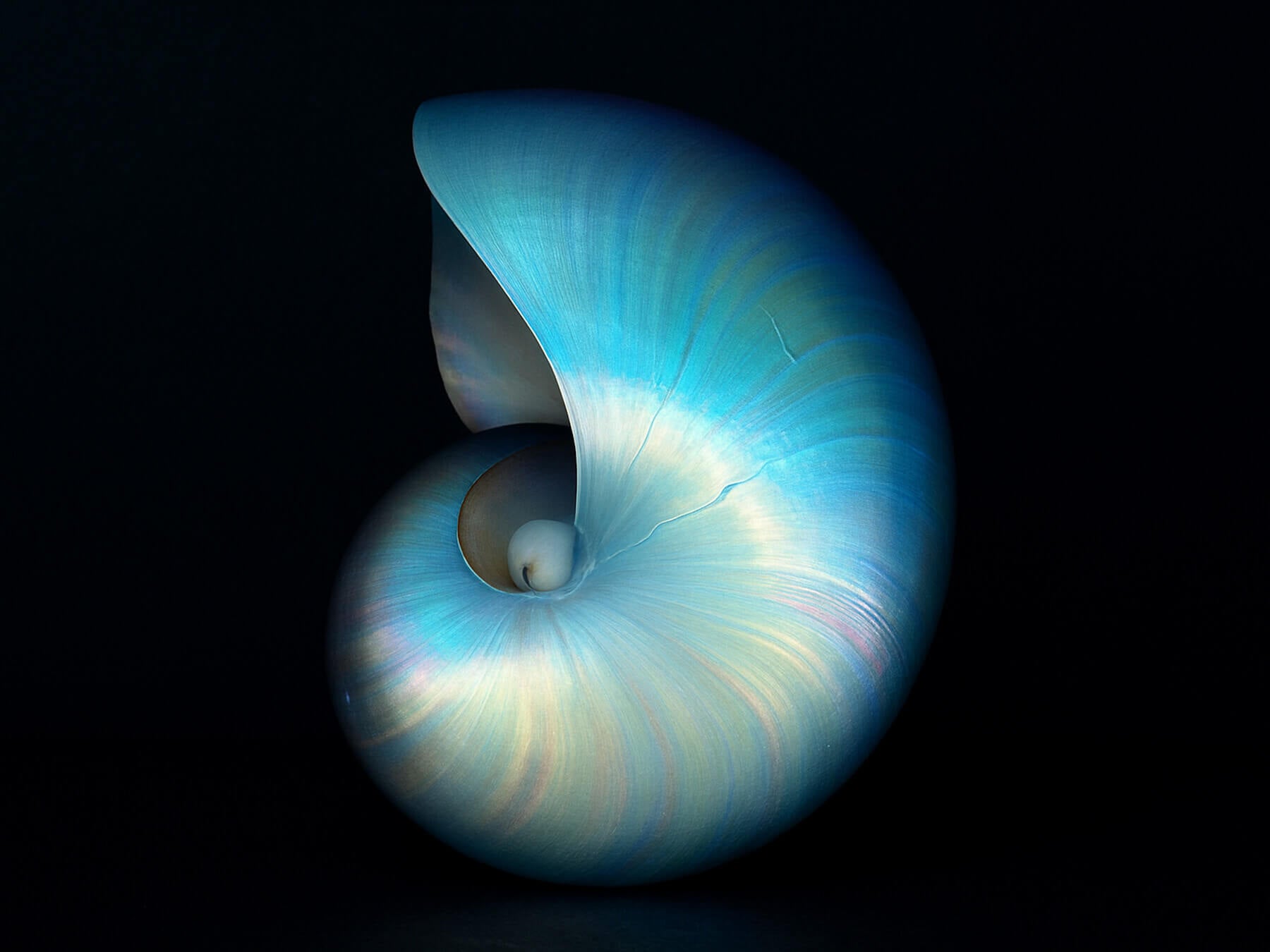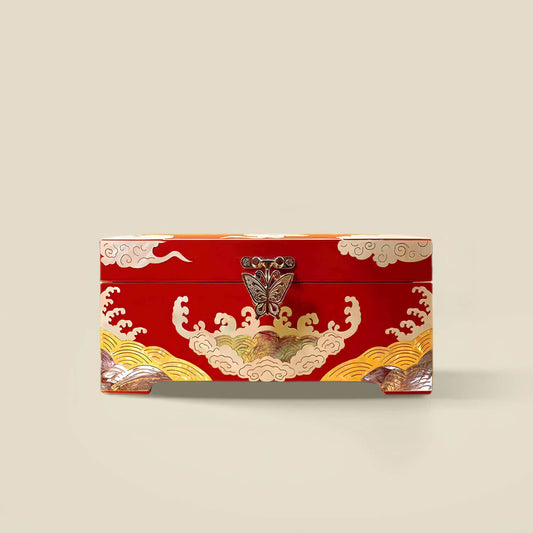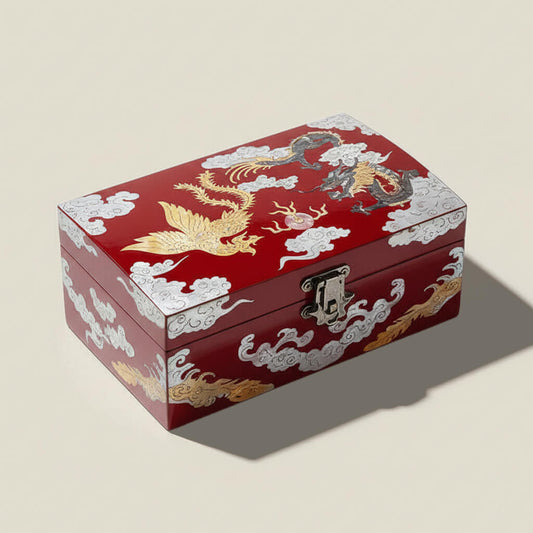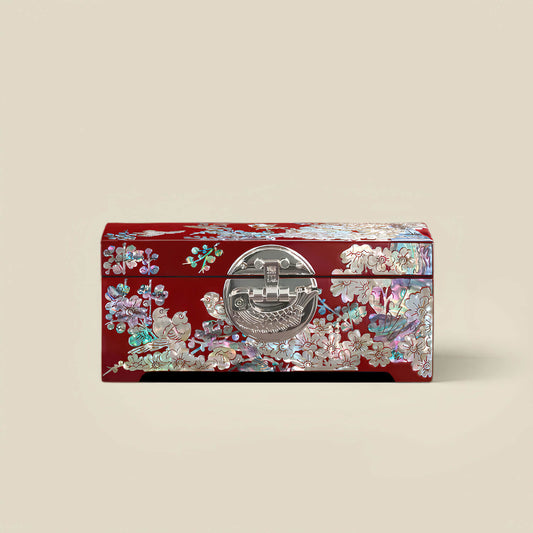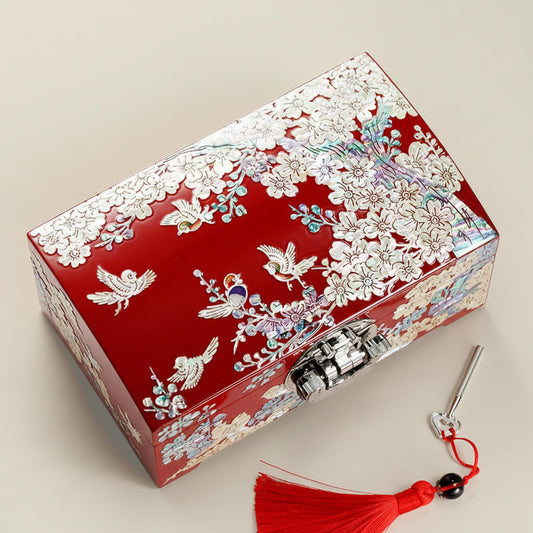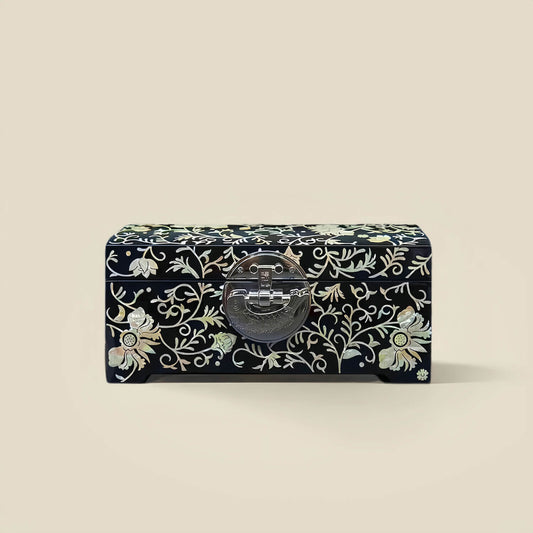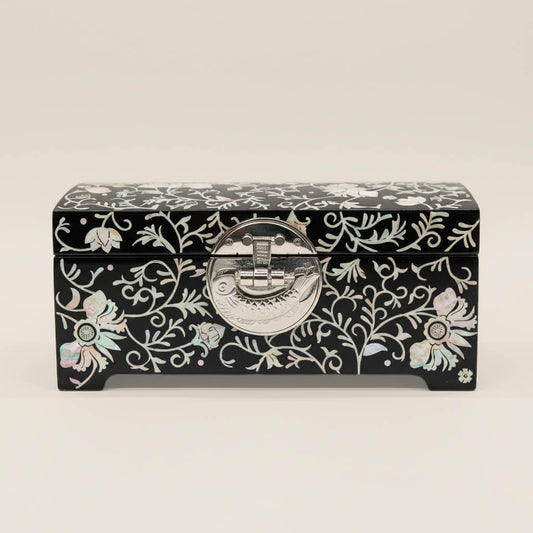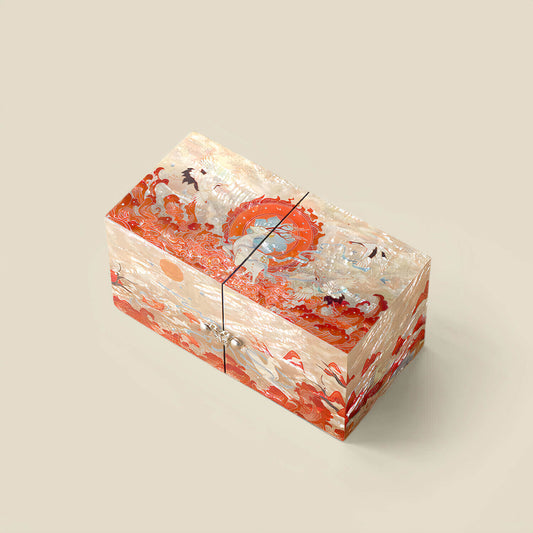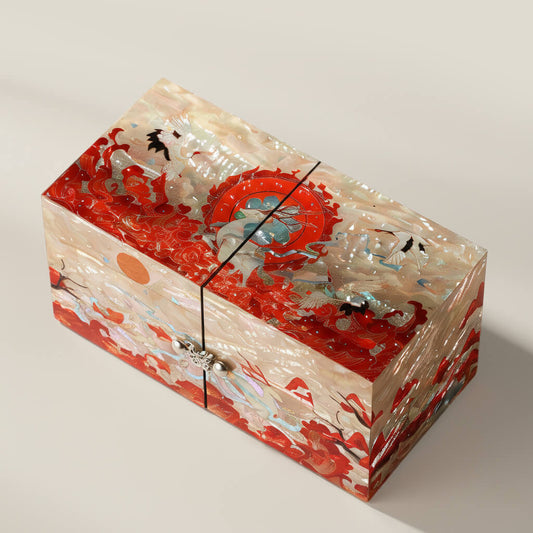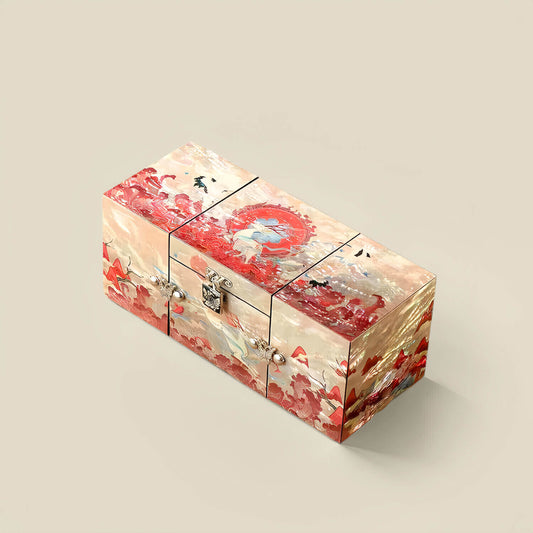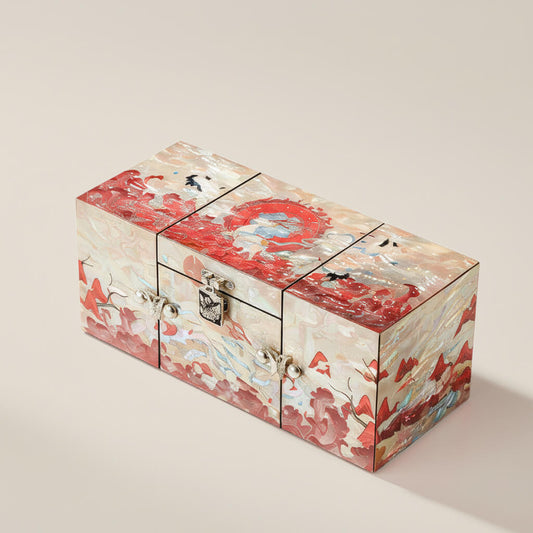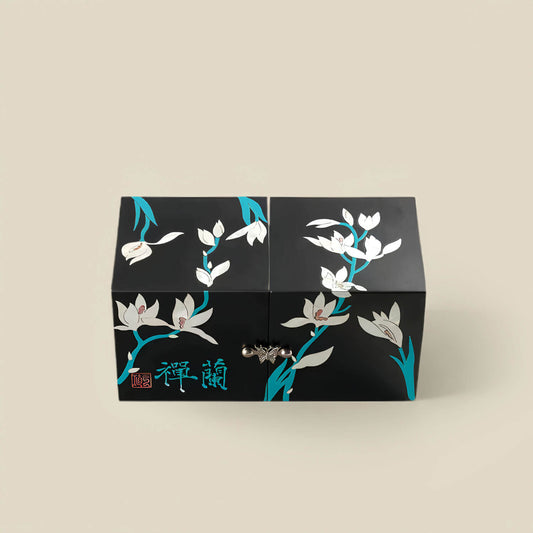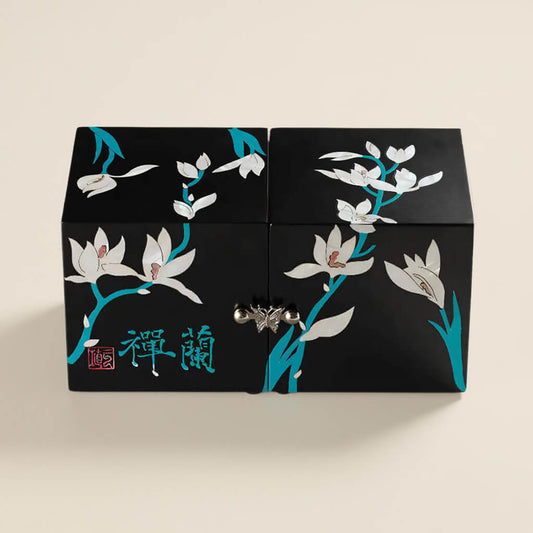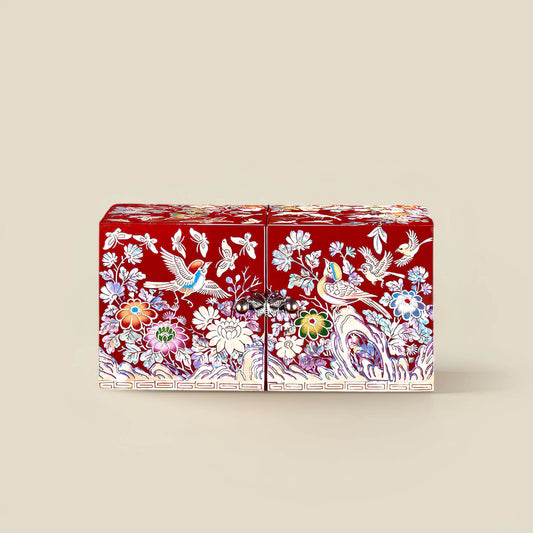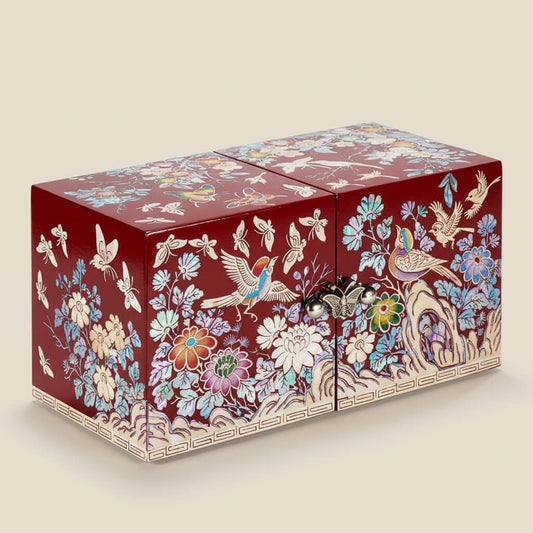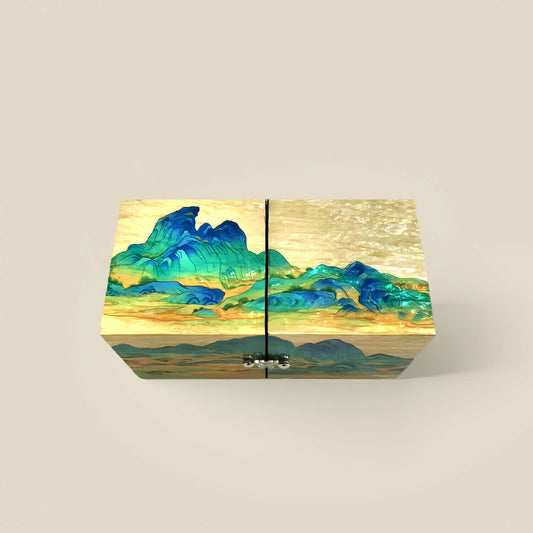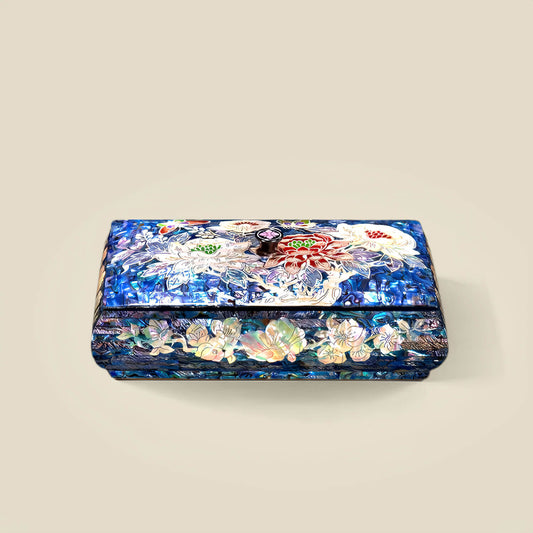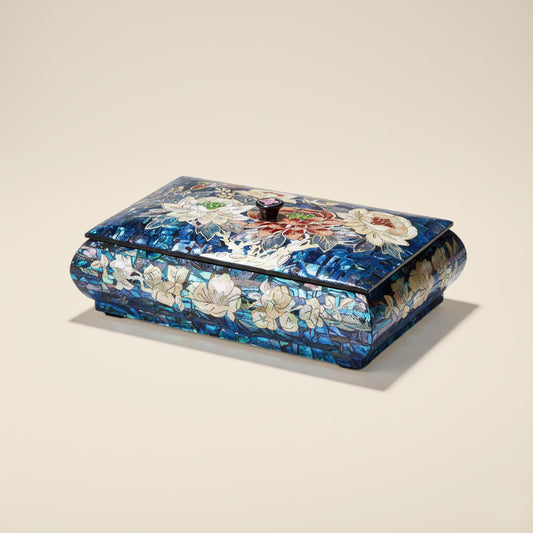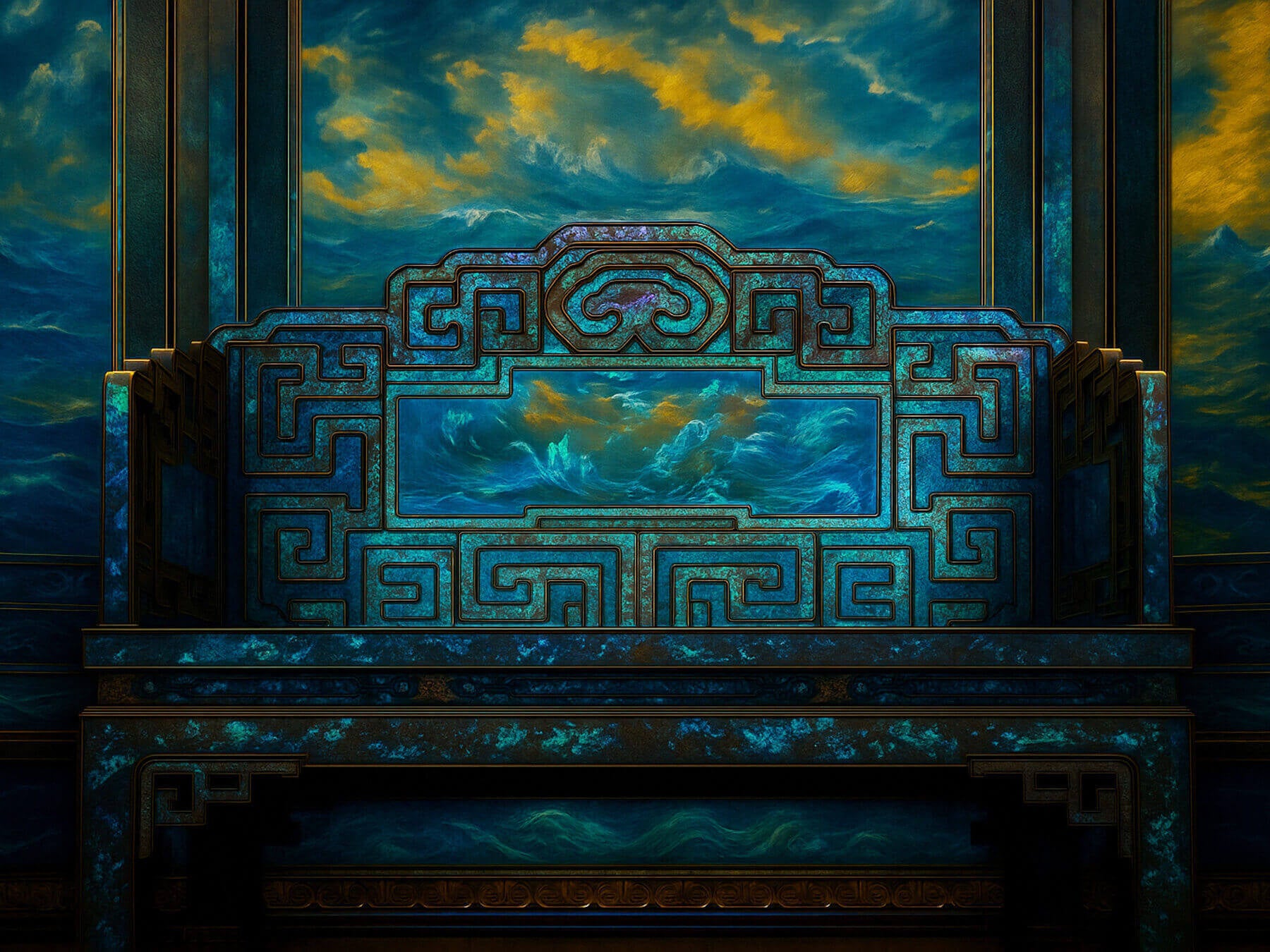
A THOUSAND YEARS OF SILENT BRILLIANCE
From China’s ancient shell inlay tradition — a UNESCO-listed art form, quietly preserved by the skilled hands of modern-day masters.
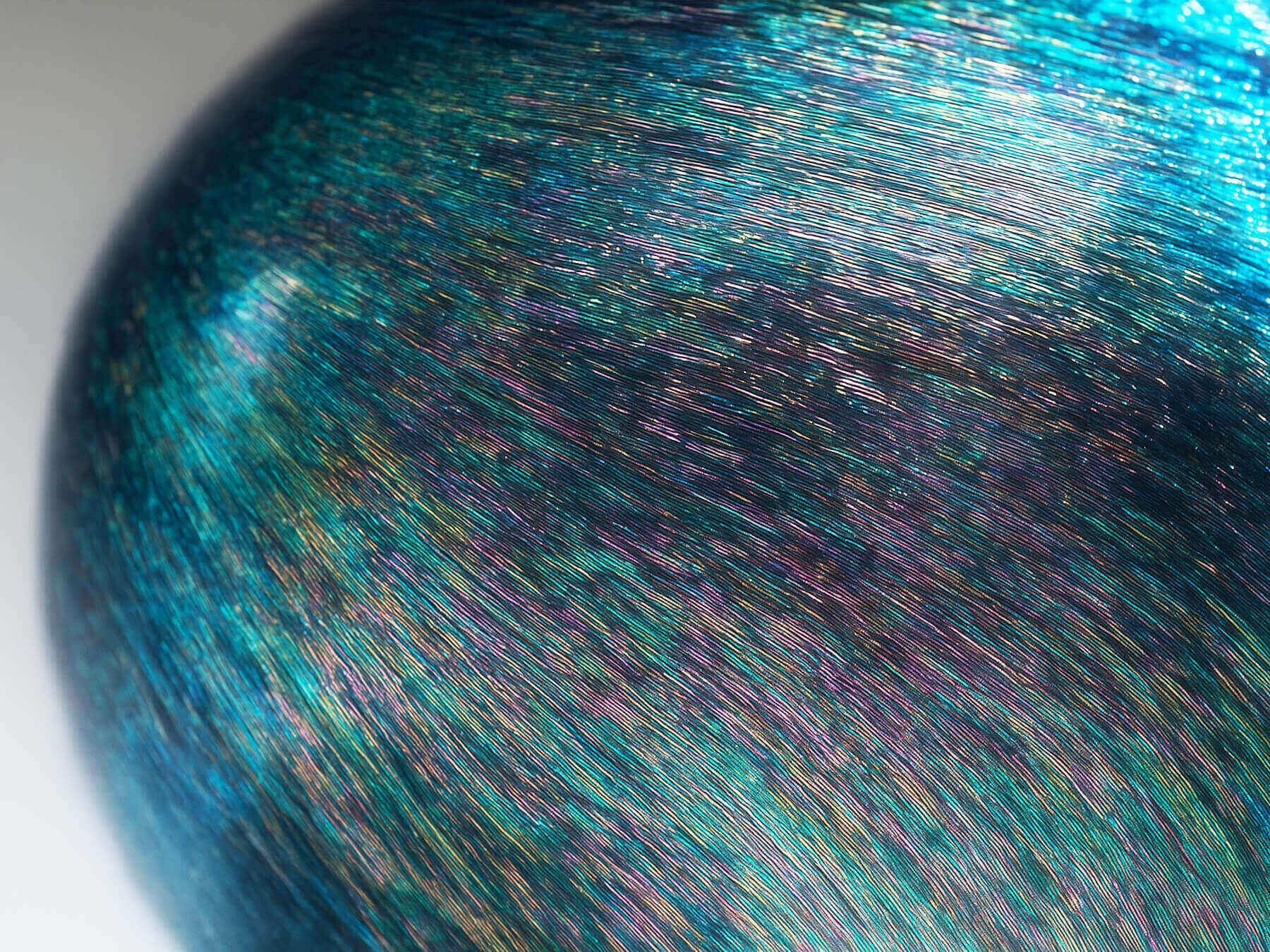
CRAFTED OVER WEEKS, TREASURED FOR LIFE
Each box is handcrafted by master artisans—shaped with care, polished with skill, and perfected through patience and pride.
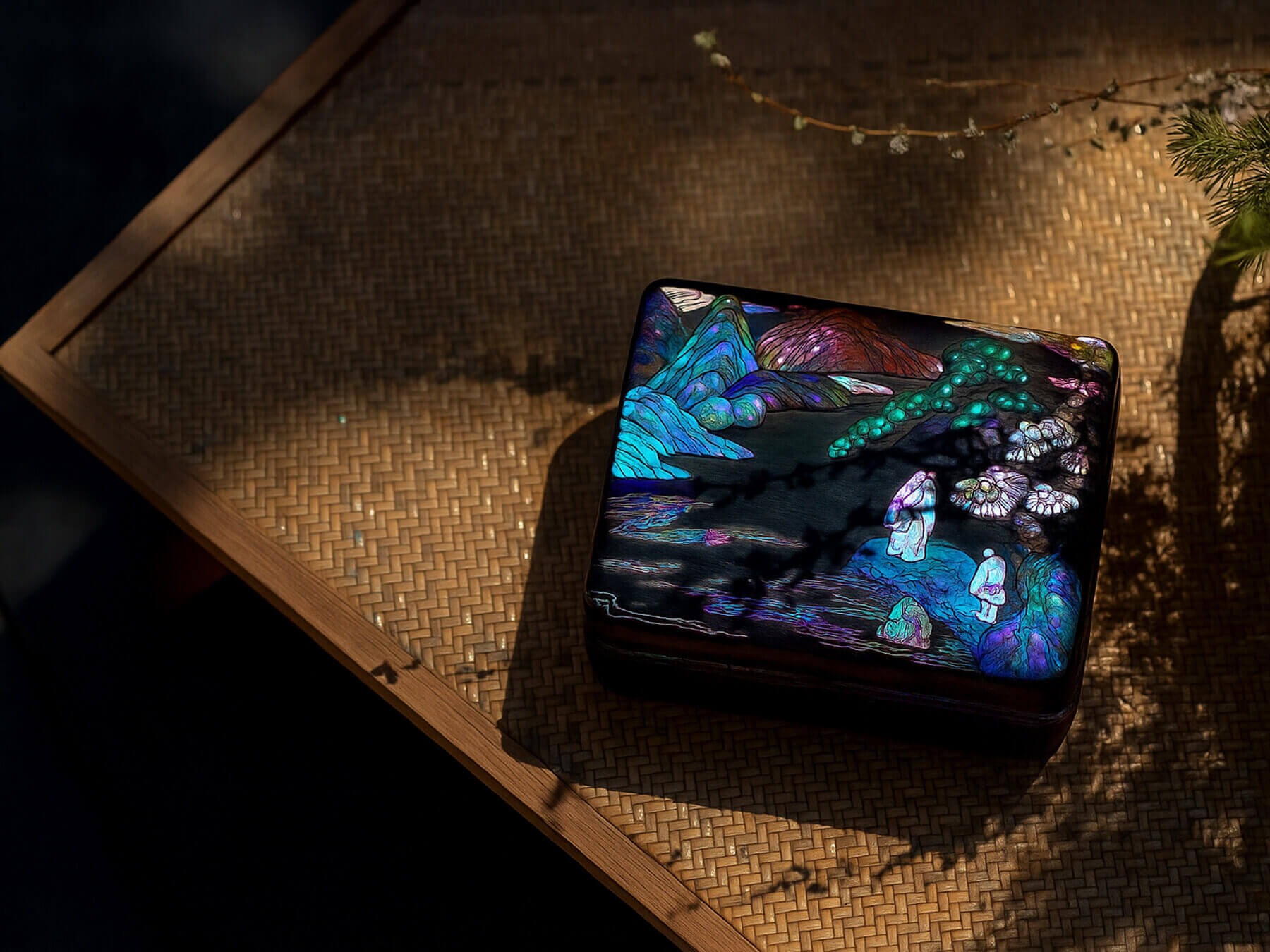
NOT JUST A BOX — A LEGACY IN HAND
More than a gift — each piece is a cultural heirloom, designed to be admired, remembered, and passed on across generations.
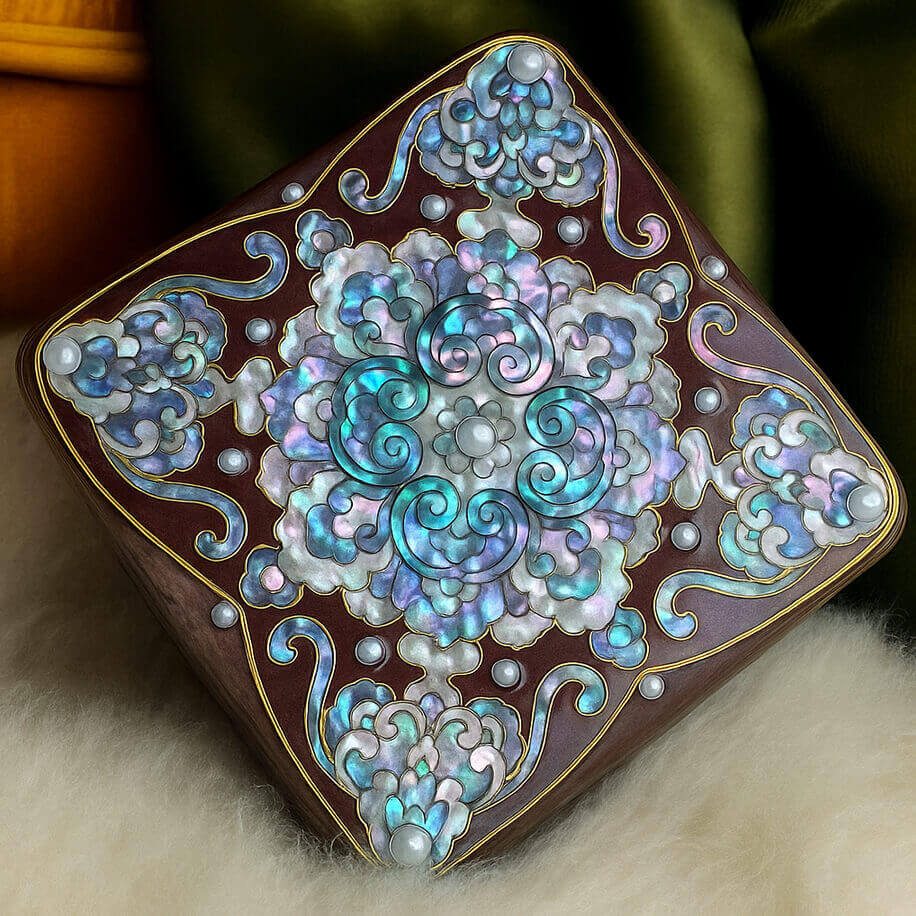
SHELL INLAY: THE TIMELESS BRILLIANCE OF EASTERN ART
Shell inlay—also known as mother-of-pearl inlay—is a revered decorative art that originated in ancient China and flourished across East Asia. Once reserved for royalty, it embodied status, elegance, and spiritual symbolism. Master artisans meticulously cut and shape luminous shells by hand, embedding them into wood or lacquer surfaces to form intricate patterns inspired by nature, poetry, and mythology. This labor-intensive craft reached its golden age during the Ming and Qing dynasties, when it was celebrated as the pinnacle of aesthetic and technical mastery.
Today, few artisans still possess the skill to carry on this endangered tradition. At Wooowshop, we honor this legacy by creating each piece entirely by hand—no shortcuts, no compromises. With every box, you don’t just own an object; you hold a thousand years of heritage, craftsmanship, and cultural significance.
NEW ARRIVAL — LIMITED EDITION, GRAB YOURS NOW!
Handcrafted Jewelry Box with Inlaid Colored Shells ZB08
Share
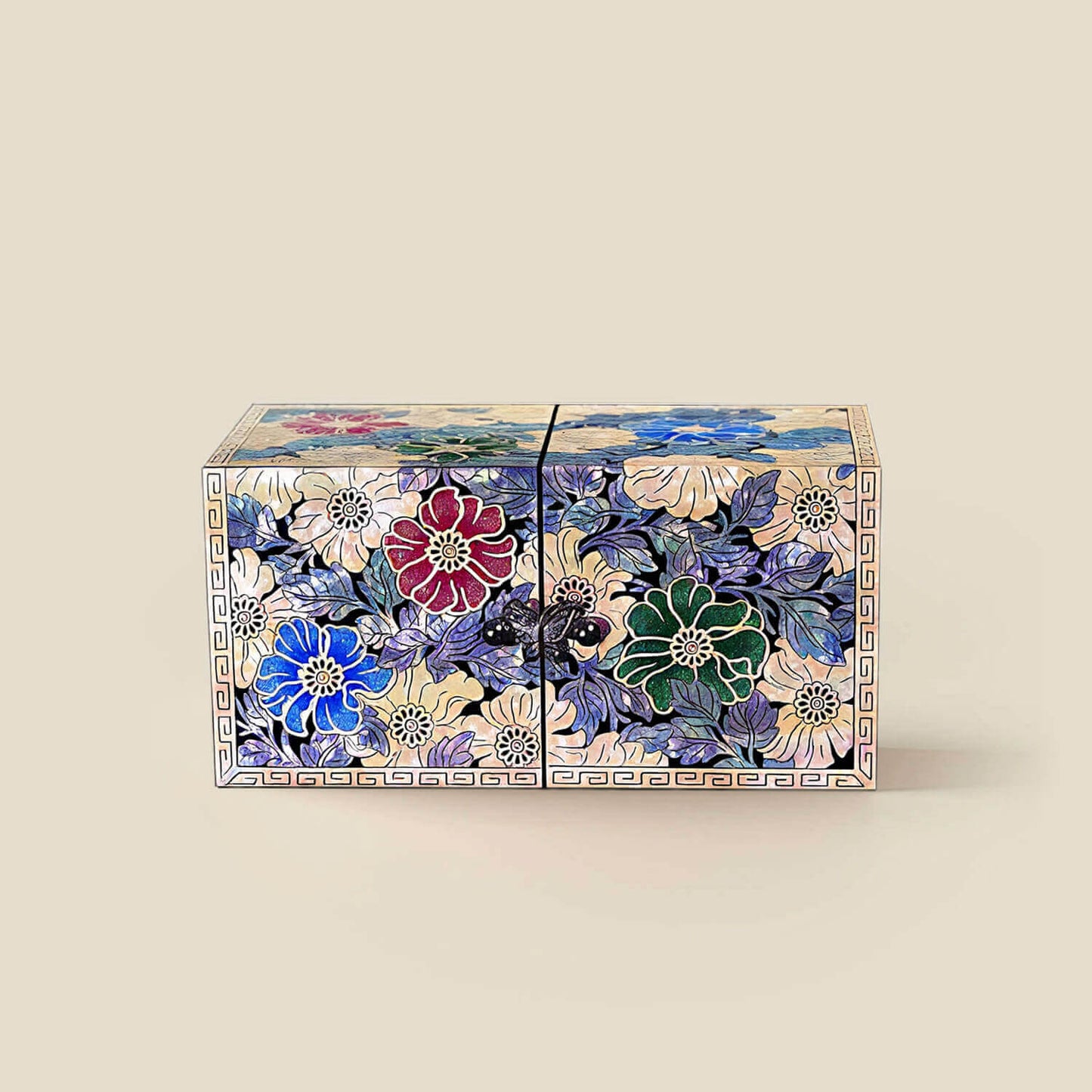
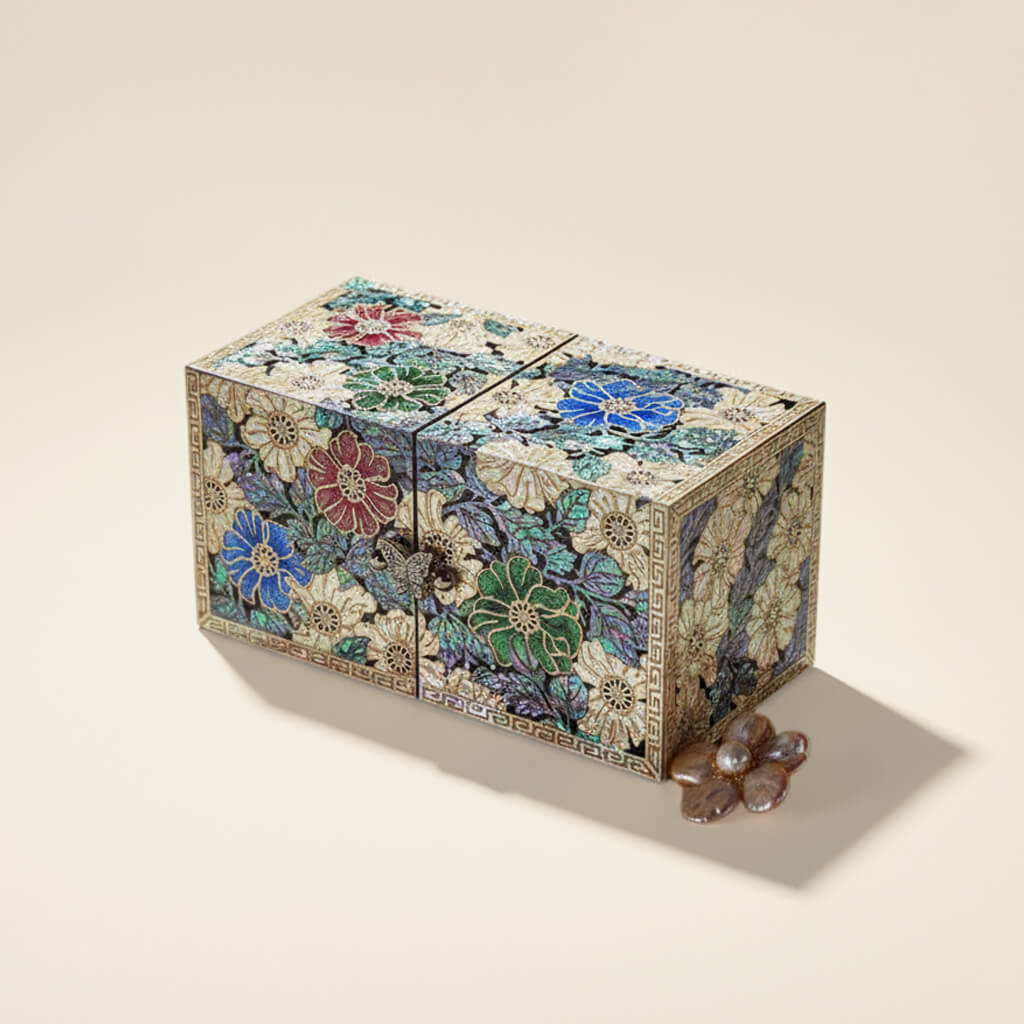
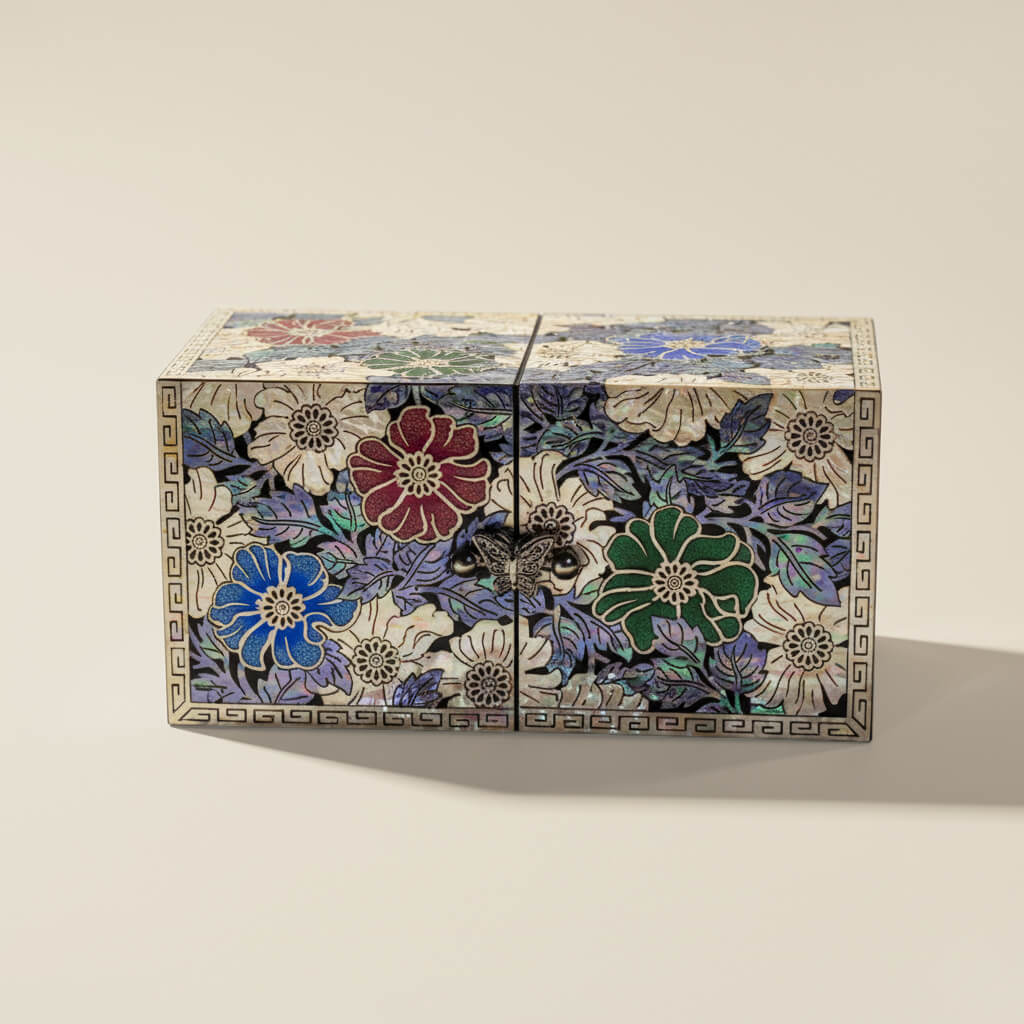
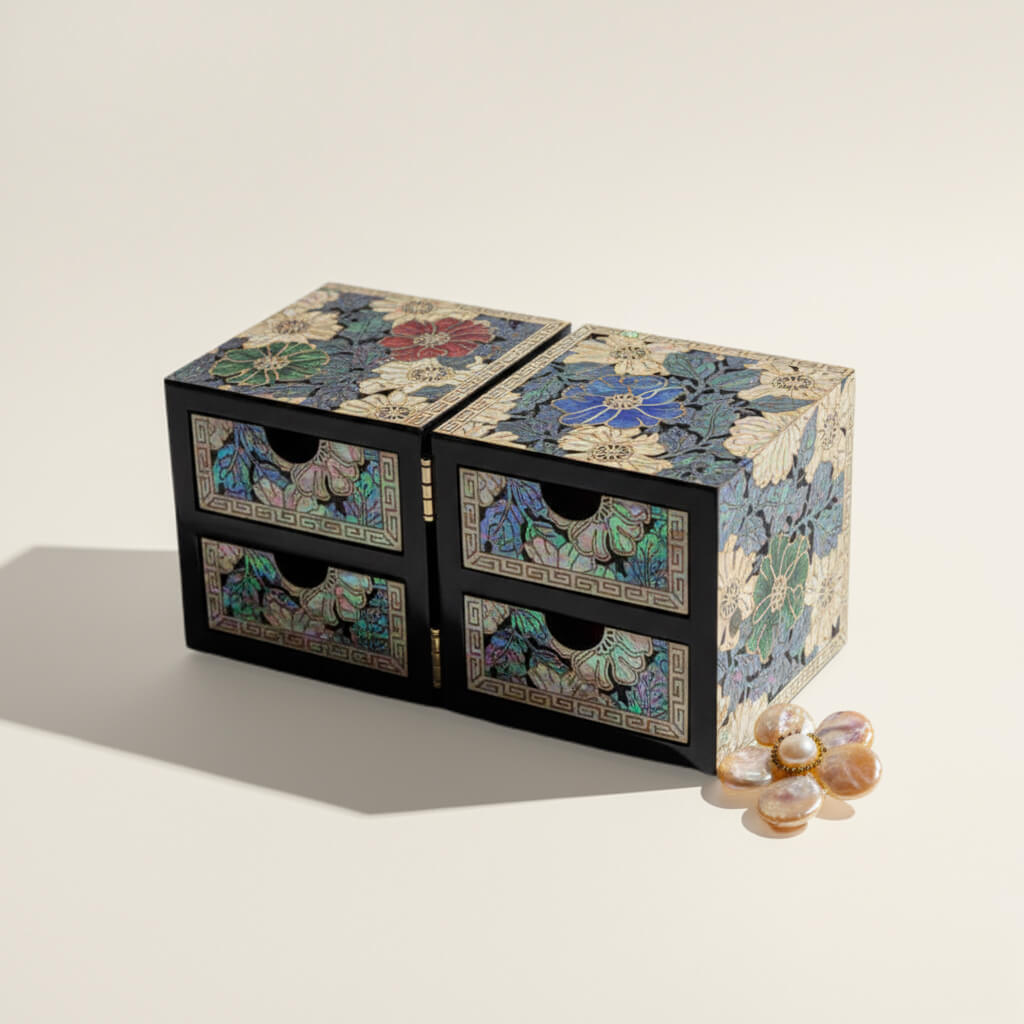
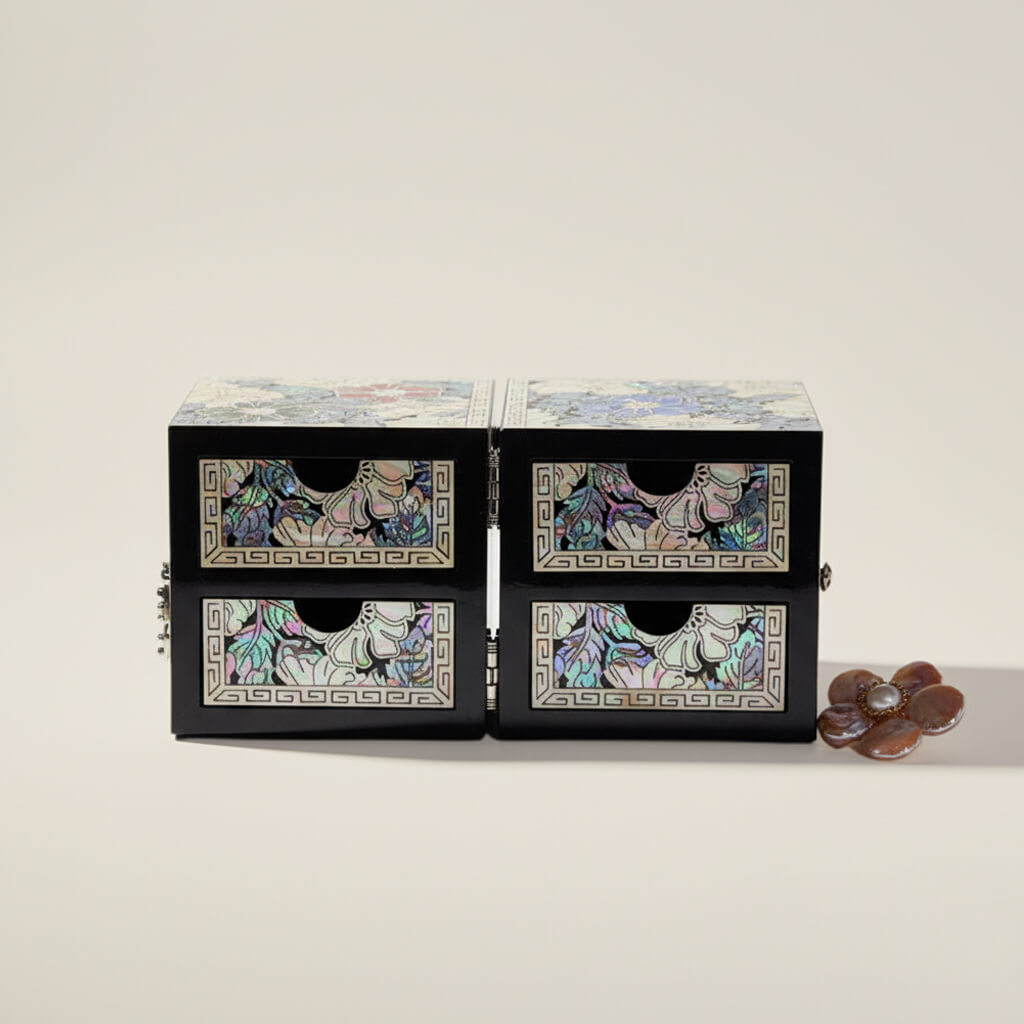
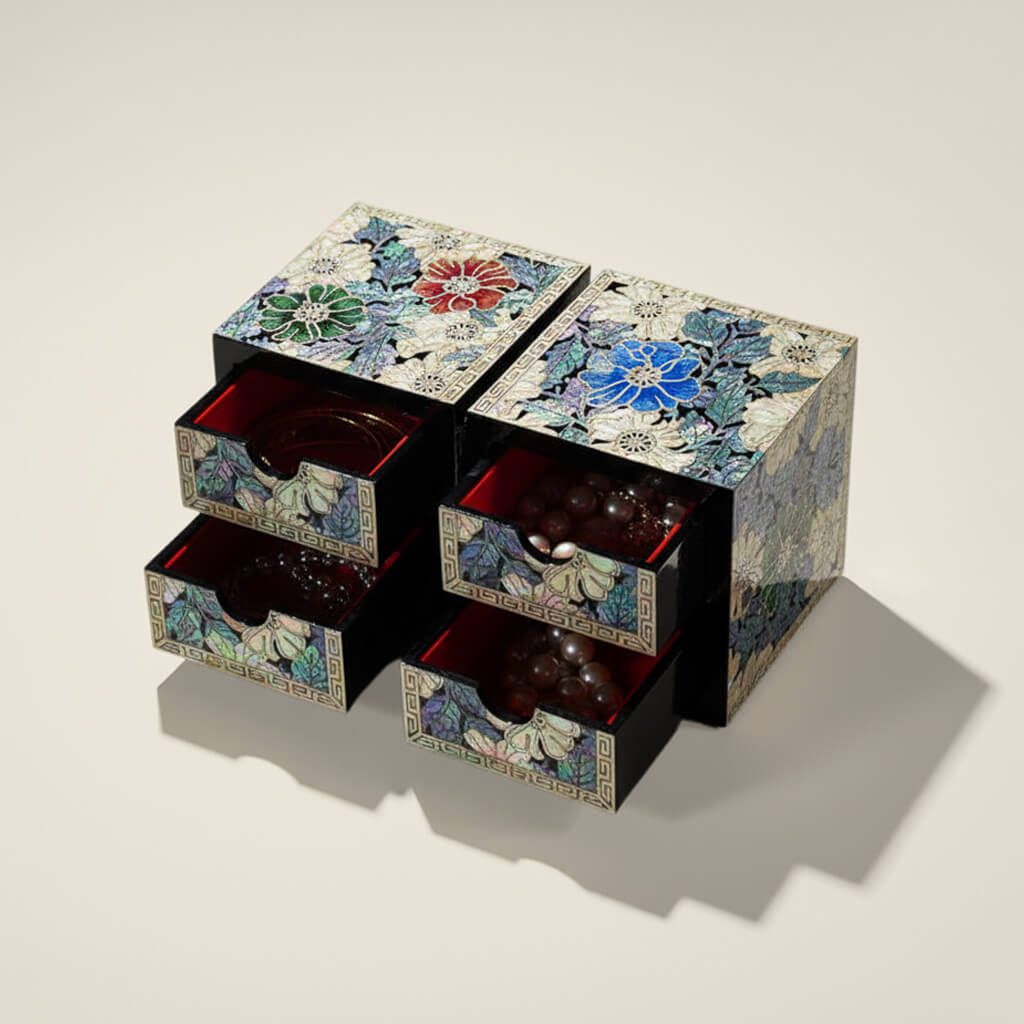
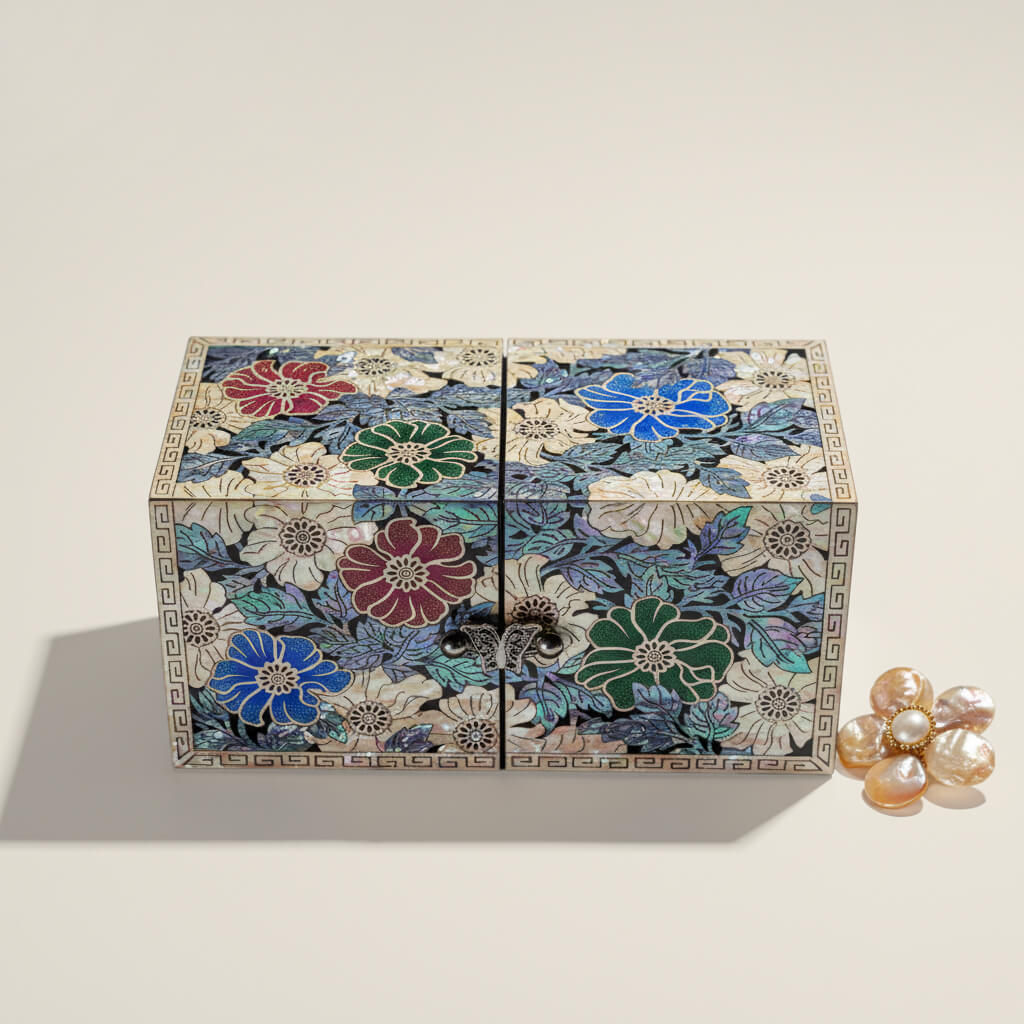
Handcrafted Jewelry Box with Inlaid Colored Shells FG11 / Essential Edition
Share
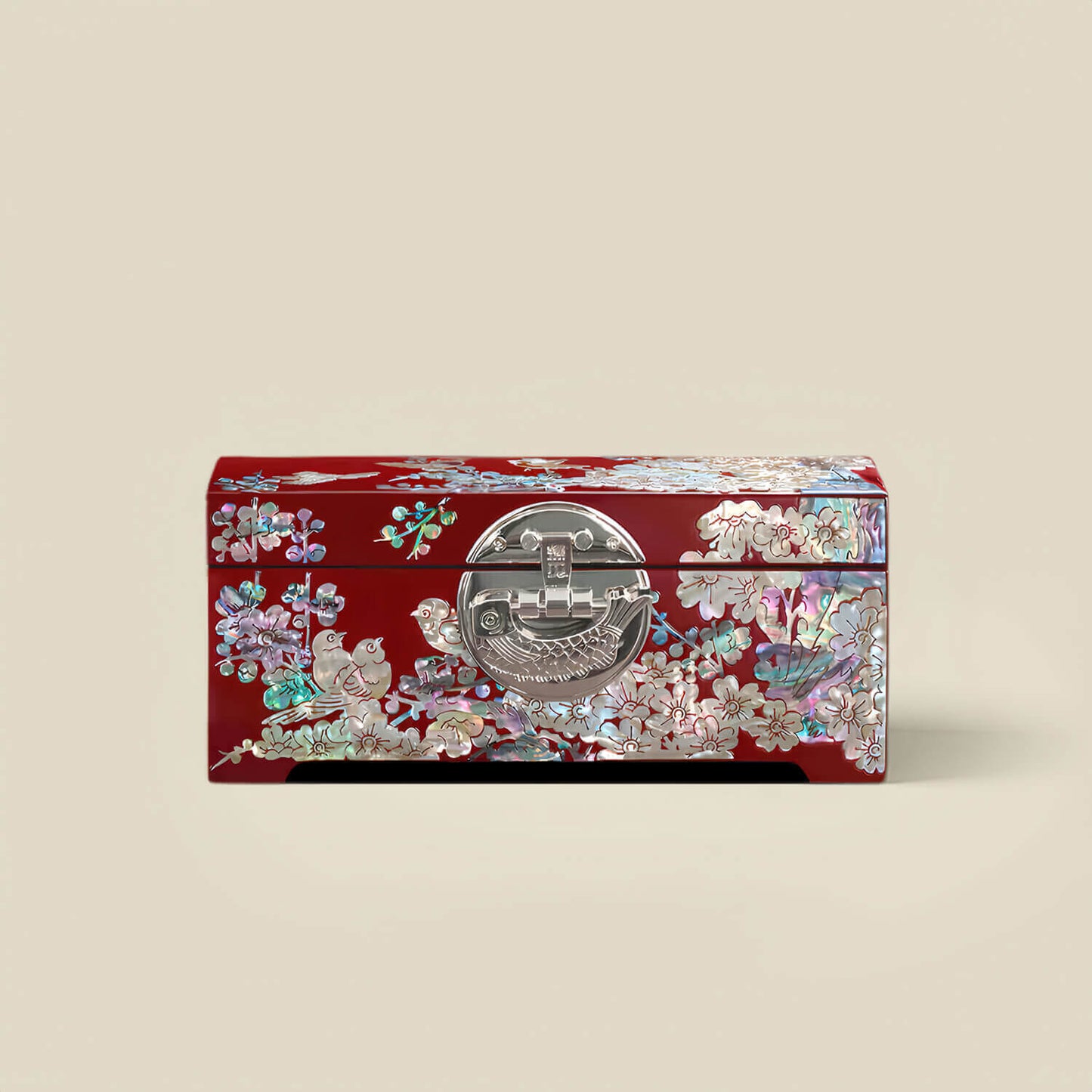
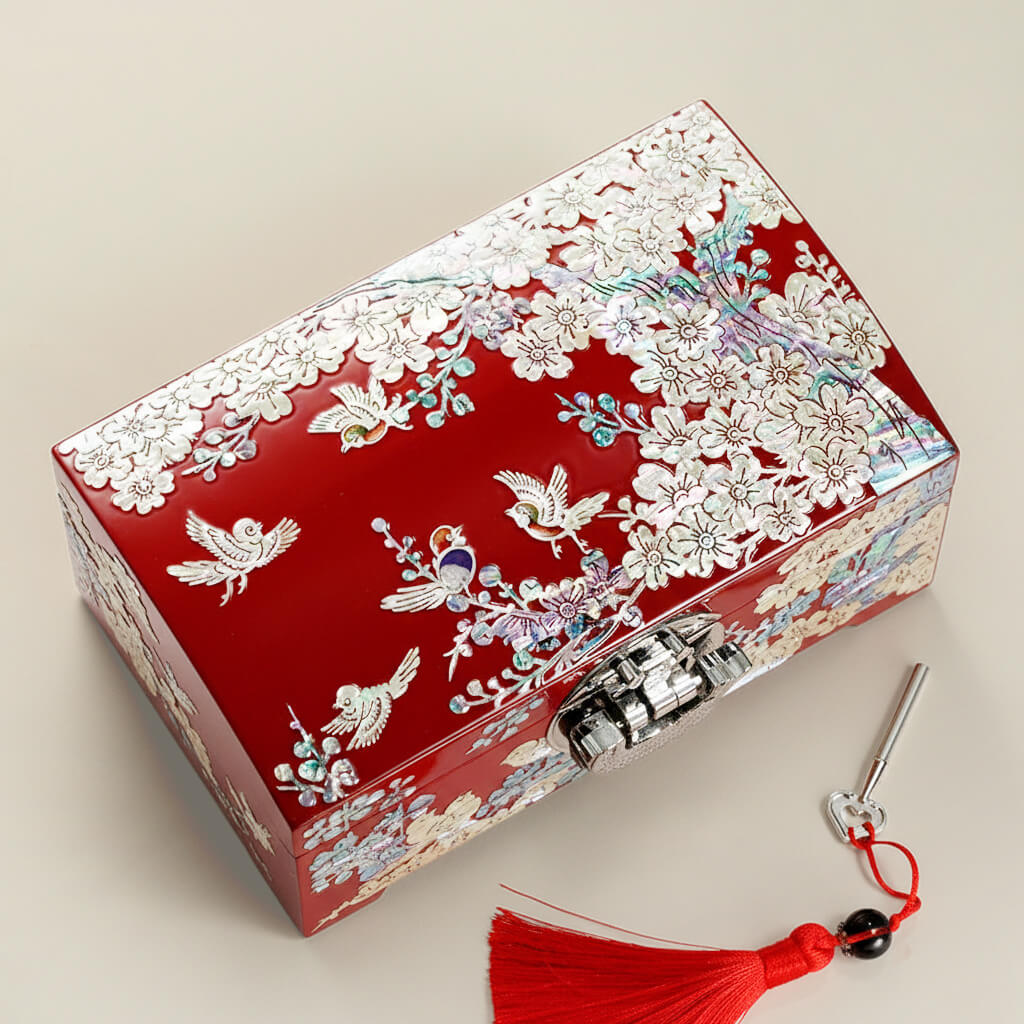
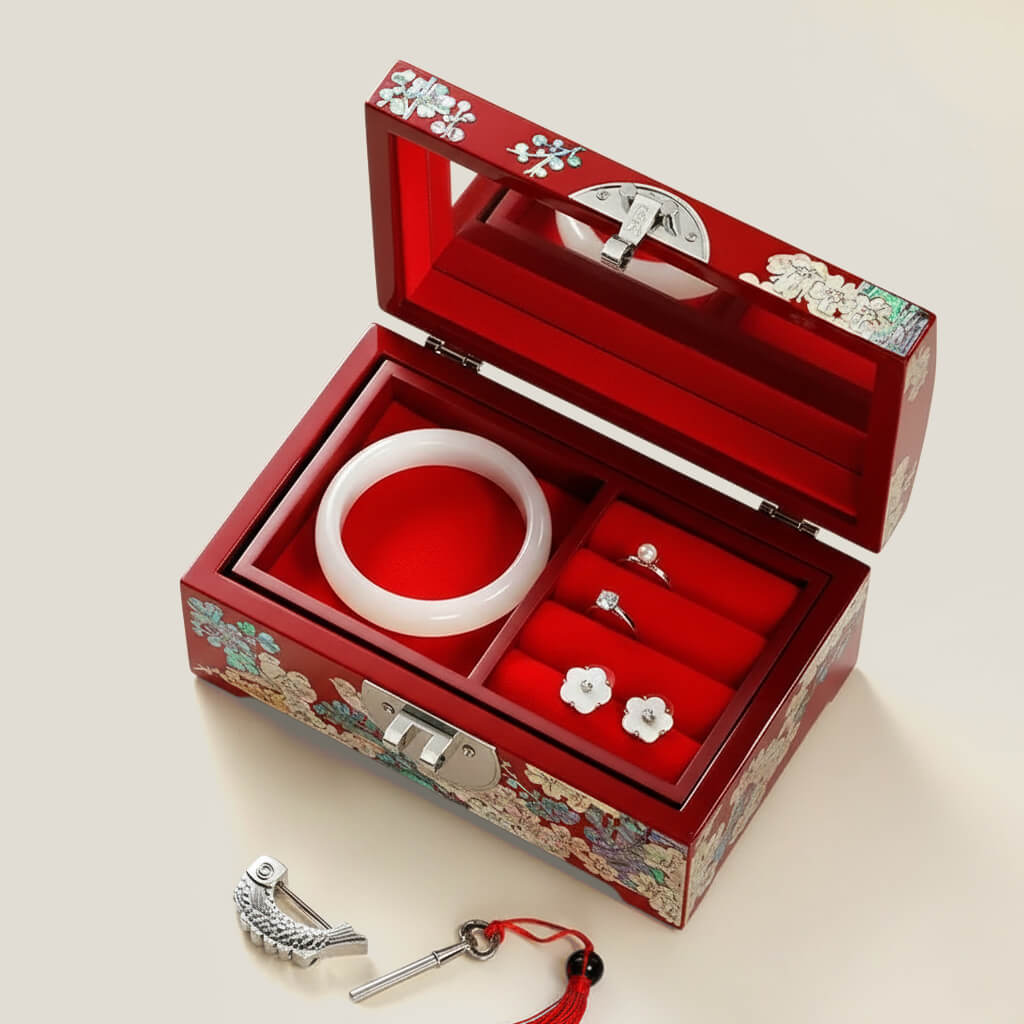
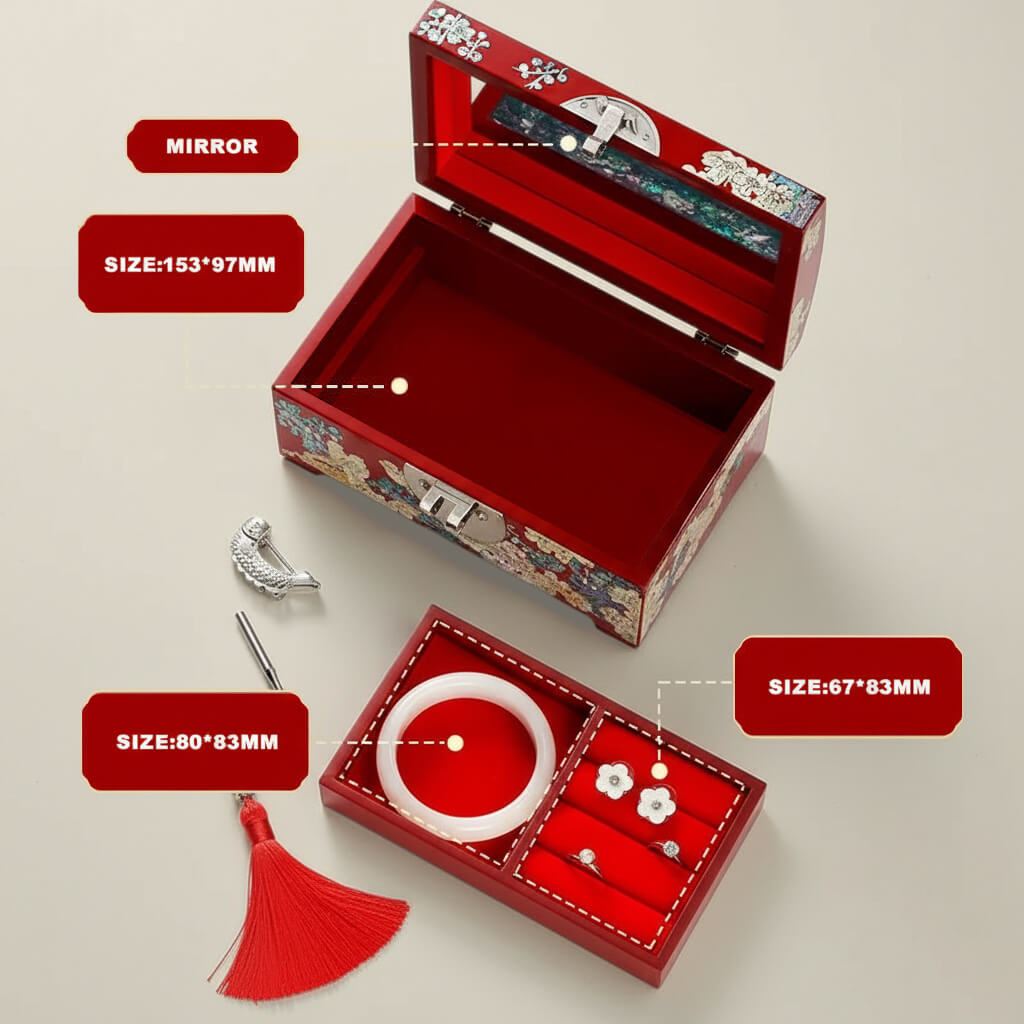
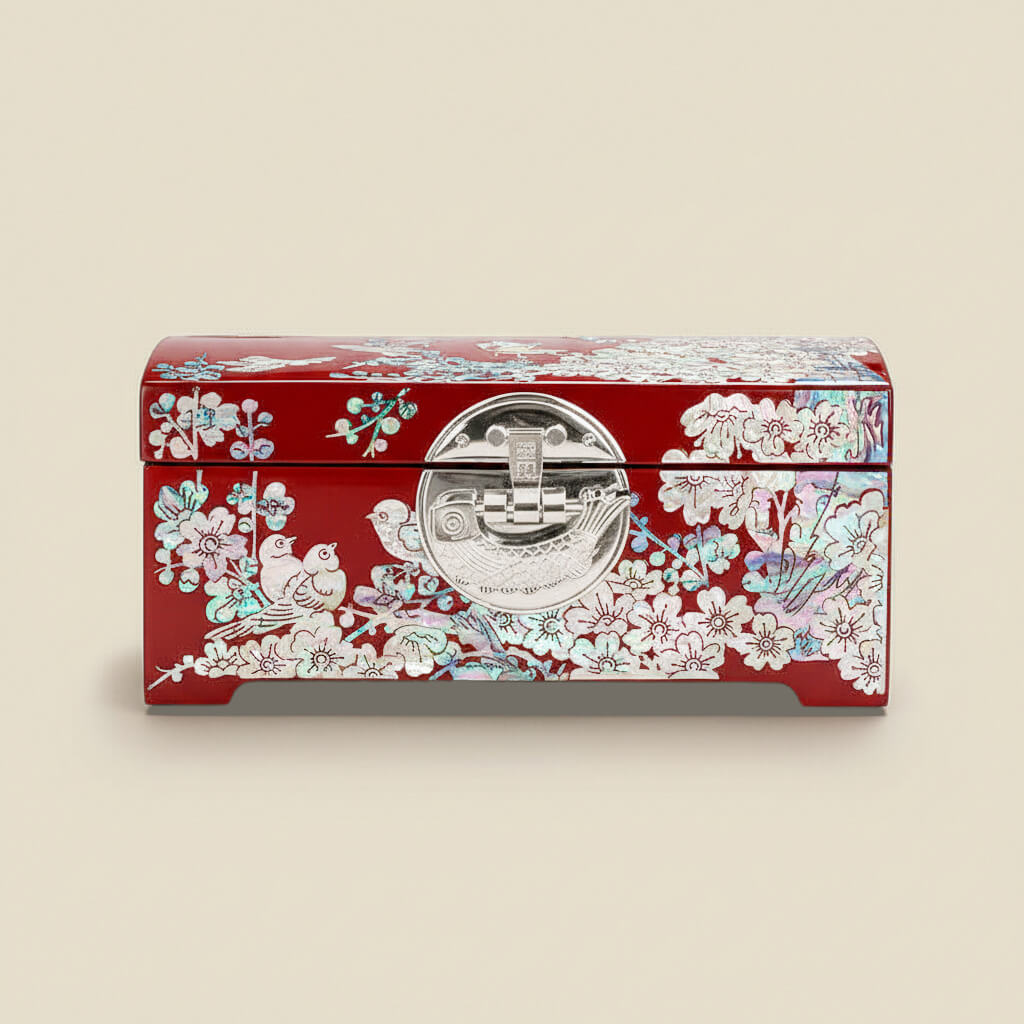
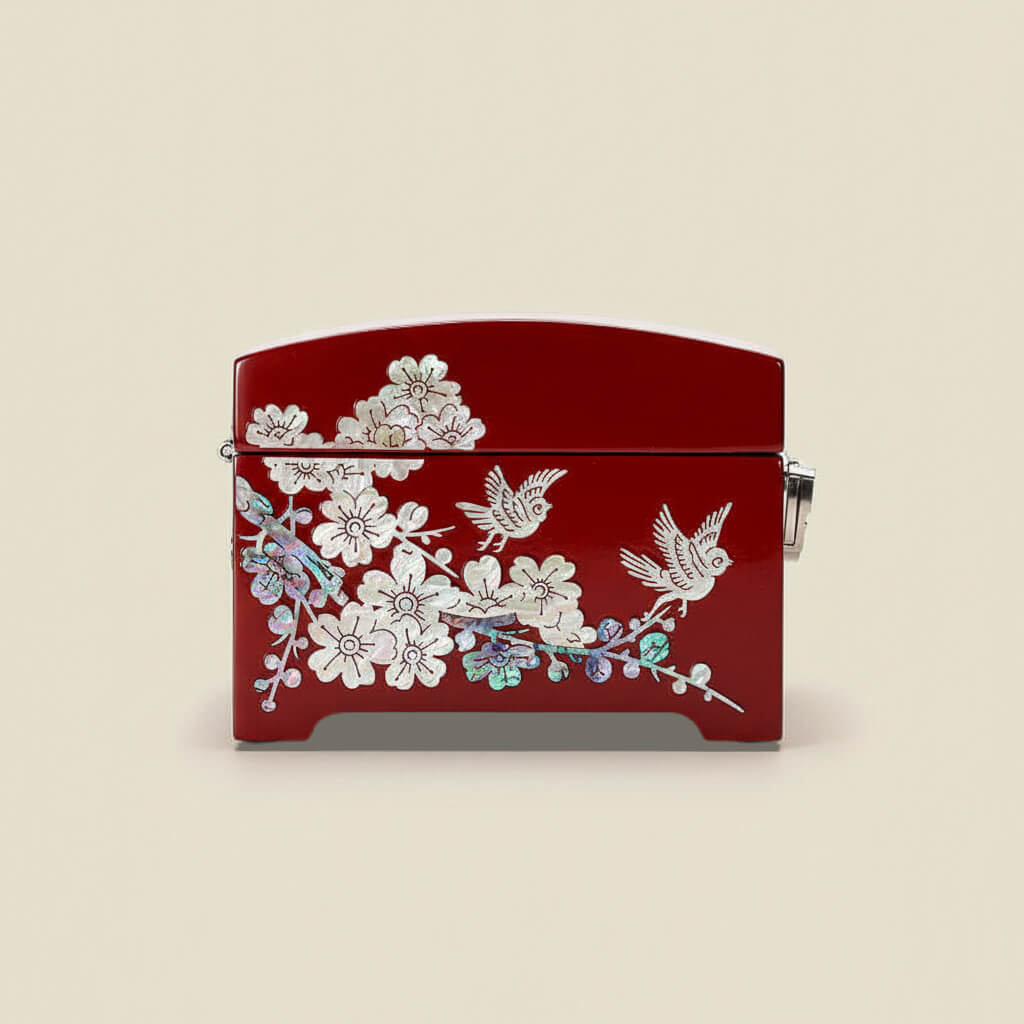
FINEST MATERIALS
Mother-of-pearl is treasured not only for its vivid iridescence, but also for its rarity, durability, and the time it takes to form. Sourced from abalone shells and shaped entirely by hand, each piece reflects the combined gift of nature, time, and human skill. Remarkably, its luminous beauty can last for a century without fading—like light preserved through time.
EXQUISITE CRAFTSMANSHIP
-

7 intricate techniques
-

19 meticulous steps
-

30-day production cycle
-

1.Design Planning
-

2.Shell Polishing
-

3.Shell Piece Cutting
-

4.Hand Inlaying Shell
-

5.Hand Painting Details
-

6.Apply & Polish Lacq.
Each shell inlay takes weeks of meticulous handcrafting—from selecting premium abalone to cutting, embedding, polishing, and lacquering through over a dozen steps. Only master artisans, trained for years, can shape such delicate materials at this level of detail. Each box is a rare heirloom shaped by time, patience, and tradition.
CURATED TREASURES
-
Handcrafted Jewelry Box with Inlaid Colored Shells QS03
5.0 / 5.0
(3) 3 total reviews
Regular price $495.00Regular price$600.00Sale price $495.00Sale -
Handcrafted Jewelry Box with Inlaid Colored Shells FG11
5.0 / 5.0
(7) 7 total reviews
Regular price $645.00Regular price$800.00Sale price $645.00Sale -
Handcrafted Jewelry Box with Inlaid Colored Shells QS02
5.0 / 5.0
(5) 5 total reviews
Regular price $745.00Regular price$900.00Sale price $745.00Sale -
Handcrafted Jewelry Box with Inlaid Colored Shells QS16
5.0 / 5.0
(3) 3 total reviews
Regular price $795.00Regular price$950.00Sale price $795.00Sale -
Handcrafted Jewelry Box with Inlaid Colored Shells QS01
5.0 / 5.0
(1) 1 total reviews
Regular price $495.00Regular price$600.00Sale price $495.00Sale -
Handcrafted Jewelry Box with Inlaid Colored Shells QS05
5.0 / 5.0
(2) 2 total reviews
Regular price $945.00Regular price$1,100.00Sale price $945.00Sale
EASTERN ELEGANCE
-
Handcrafted Jewelry Box with Inlaid Colored Shells B051
5.0 / 5.0
(2) 2 total reviews
Regular price $350.00Regular price$420.00Sale price $350.00Sale -
Handcrafted Jewelry Box with Inlaid Colored Shells B008
5.0 / 5.0
(5) 5 total reviews
Regular price $395.00Regular price$480.00Sale price $395.00Sale -
Handcrafted Jewelry Box with Inlaid Colored Shells QS14
5.0 / 5.0
(3) 3 total reviews
Regular price $445.00Regular price$550.00Sale price $445.00Sale -
Handcrafted Jewelry Box with Inlaid Colored Shells QS19
5.0 / 5.0
(1) 1 total reviews
Regular price $795.00Regular price$950.00Sale price $795.00Sale

For Moments That Matter
Some occasions call for more than celebration—they call for remembrance. Whether it’s Mother’s Day, an anniversary, or a graduation, a handcrafted mother-of-pearl box turns milestones into lasting memories, carrying love, pride, and gratitude in every shimmer.

For Everyday Meaning
Amid daily routines, small rituals hold quiet power. A jewelry box that brings beauty to order, or a calming piece nestled in your space, becomes more than décor—it becomes a reminder to slow down, breathe deeply, and care for yourself with intention and grace.
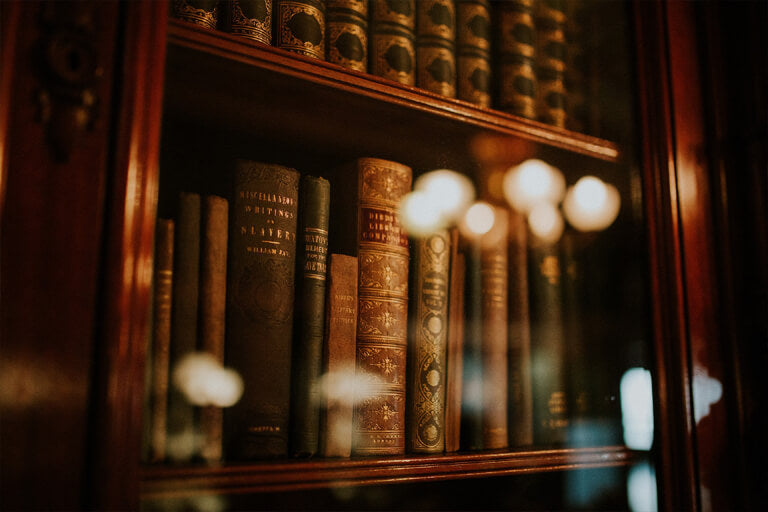
For Cultural Connection
Each piece is a tribute to timeless Eastern artistry—an elegant expression of heritage and soul. Whether offered as a meaningful gift or cherished as a personal treasure, it bridges tradition and modernity, leaving a lasting impression of thoughtfulness and refinement.
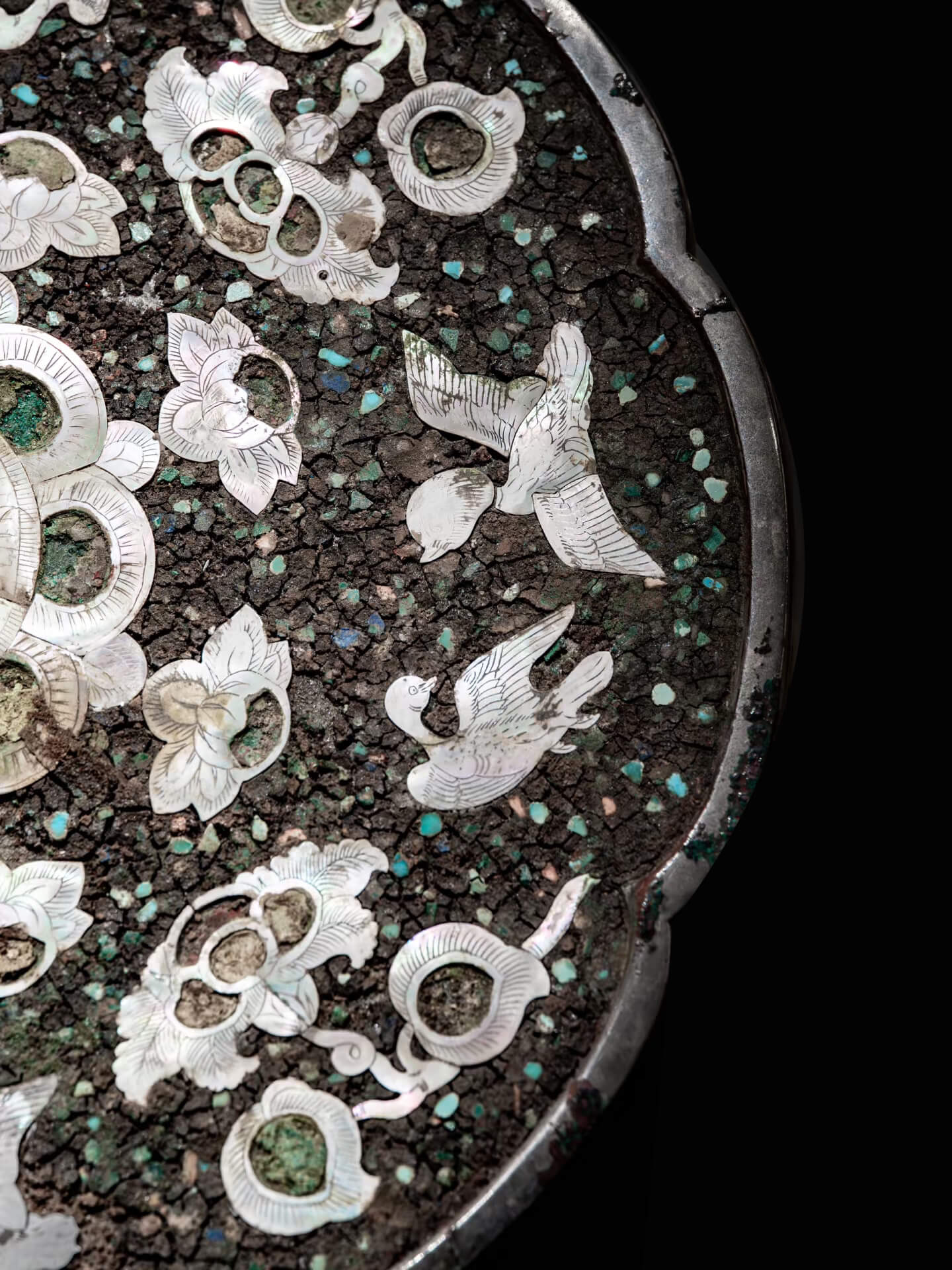
THE MOTHER-OF-PEARL INLAYS OF CHINA
Nishioka Yasuhiro, Dong Dan (Translator)
Abstrct: Traditional Chinese lacquerware include plain lacquerware painted solely with monochrome lacquer finishes such as vermillion or black as well as those undergone processing techniques including carving, mother-ofpearl inlays, engraved-gold decorations, and gold-tracing lacquering. This article focus on the technique of mother-of-pearl inlays to specify and summarize the variation of their technical styles of different periods, with a special emphasis on Yuan-dynasty (1272-1368) lacquerware embellished with such inlays. The article first introduces and briefly discusses such lacquerware before the Yuan dynasty, summarizes the style and characteristics of the Yuan lacquerware of mother-of-pearl inlays so as to establish the distinctive “Yuan style”, and then analyzes and summarizes the technical styles of the mother-of-pearl-inlaid lacquerware of the late Yuan and early Ming dynasties. For such objects produced in the Ming dynasty, which lasted for as long as approximately 300 years, the article divided the period into two sections (early years and late years) to specify the characteristics of objects of this period. At last, Qing-dynasty (1644-1911) mother-of-pearl inlays are reviewed.
Key Words: China, lacquerware, mother-of-pearl inlays, the Yuan, Ming, and Qing dynasties
-
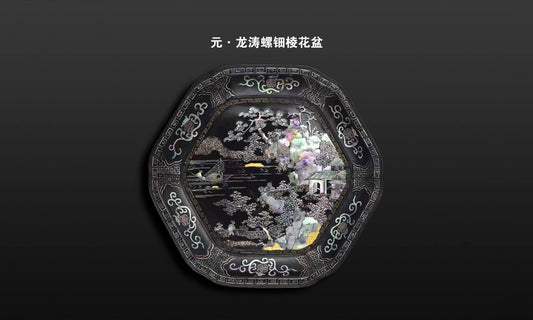
THE TREASURE OF THE OCEAN: THE DAZZLING LEGACY ...
Among the treasures of China's intangible cultural heritage, nacre inlay art shines with its deep connection to the ocean and exquisite craftsmanship, embodying the unique charm of Eastern aesthetics. This...
THE TREASURE OF THE OCEAN: THE DAZZLING LEGACY ...
Among the treasures of China's intangible cultural heritage, nacre inlay art shines with its deep connection to the ocean and exquisite craftsmanship, embodying the unique charm of Eastern aesthetics. This...
-
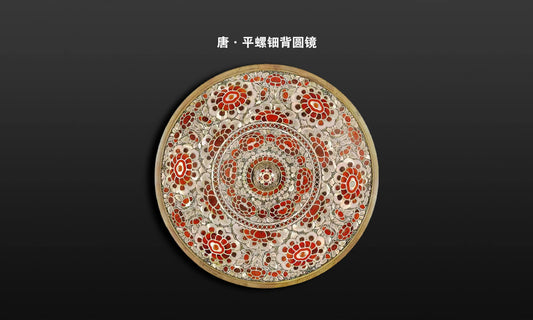
A SYMPHONY OF COLORS: THE ART OF MOTHER-OF-PEAR...
As a child, strolling along the seaside often meant finding colorful shells that brought immense joy. But did you know these radiant shells can transform into dazzling works of art...
A SYMPHONY OF COLORS: THE ART OF MOTHER-OF-PEAR...
As a child, strolling along the seaside often meant finding colorful shells that brought immense joy. But did you know these radiant shells can transform into dazzling works of art...
-
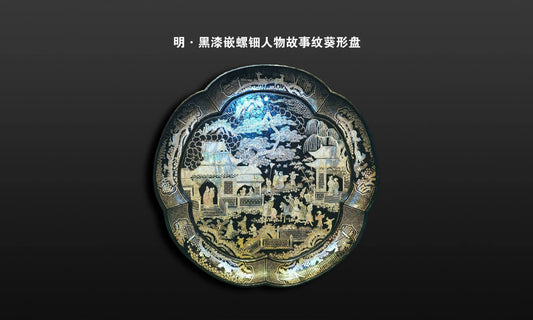
THE RADIANT PLATE FROM 400 YEARS AGO: MADE FROM...
This stunning artifact, with a rainbow-like sheen, is the Black Lacquer Plate with Inlaid Shells Depicting a Story Scene, housed in the Gushan Pavilion of the Zhejiang Provincial Museum in...
THE RADIANT PLATE FROM 400 YEARS AGO: MADE FROM...
This stunning artifact, with a rainbow-like sheen, is the Black Lacquer Plate with Inlaid Shells Depicting a Story Scene, housed in the Gushan Pavilion of the Zhejiang Provincial Museum in...
